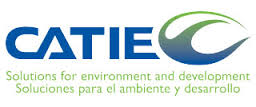Resultados de la búsqueda
Displaying 11 - 14 of 14 results.
La perspectiva de género en los procesos de desarrollo comunitario y sostenible
Este manual tiene como objetivos sensibilizar al personal técnico de proyectos para que desarrollen actitudes, valores y prácticas tendientes a incorporar el enfoque de género en su quehacer; y conocer herramientas básicas con enfoque de género y su aplicación en los proyectos y acciones en el campo. El manual está concebido desde un enfoque constructivista y una metodología participativa; incluye análisis conceptual, trabajo en grupo y ejercicios que permiten procesos de reflexión y aprendizaje, para una práctica mejorada que contribuya a un desarrollo comunitario, sostenible y equitativo.
Tema(s):
Año de publicación:
2012Afinet: agroforestry innovation thematic network
AFINET is one of the seventeen thematic networks that the European Union has financed under the H2020 framework and it is supervised by the EIP-Agri in order to foster innovation in Europe. The main topic of AFINET is agroforestry a practice of deliberately integrating woody vegetation with crops and/or animal systems and the promotion of this practice to foster climate changes. AFINET follows a multi-actor approach linked to the nine Regional Innovations Networks created to identify main challenges and develop main innovations about agroforestry.
Tema(s):
Formas de explotación agrariainnovaciónprocesos de múltiples partes interesadasredesagricultura sostenible...
Año de publicación:
2018Culturing Development: Bananas, Petri Dishes and ‘Mad Science’
This paper analyses a biotechnology-focused project which aims to promote the development and adoption of tissue culture bananas by small-scale farmers in Kenya. The paper highlights the generation of several important narratives that are used to justify the development and dissemination of this technology. First, a disaster narrative, a series of claims regarding rural livelihoods and banana production in Kenya, is generated. This creates a political and technical space for the creation of a new science that can solve these problems.
Tema(s):
desarrollo de capacidades (DC)evaluación de impactosistemas de innovacióninvestigacióndesarrollo rural...
Año de publicación:
2007Smoke, mirrors and poverty: communication, biotechnological innovation and development
Communication is essential to making biotechnology and genomics relevant to developing countries and poor people. Few would disagree with that. But many are sceptical about public relations efforts to impose inappropriate technological ‘solutions’ on developing countries. This paper is a partial reflection on how PR and advocacy ‘mixes’ can be understood and whether they can be useful to innovation in developing country contexts.
Tema(s):
abogacía/ promocióndesarrollo de capacidades (DC)comunicaciónsistemas de innovacióndesarrollo rural...
Año de publicación:
2005Páginas
Sorting block
Filtrar por tema(s)
- advisory services (4) Apply advisory services filter advisory services
- advocacy (1) Apply advocacy filter advocacy
- capacity development (CD) (9) Apply capacity development (CD) filter capacity development (CD)
- climate change (2) Apply climate change filter climate change
- communication (1) Apply communication filter communication
- education (4) Apply education filter education
- extension (1) Apply extension filter extension
- facilitation (2) Apply facilitation filter facilitation
- farming systems (3) Apply farming systems filter farming systems
- food and nutrition security (1) Apply food and nutrition security filter food and nutrition security
- gender equality (4) Apply gender equality filter gender equality
- impact assessment (2) Apply impact assessment filter impact assessment
- innovation systems (8) Apply innovation systems filter innovation systems
- knowledge and information systems (2) Apply knowledge and information systems filter knowledge and information systems
- learning (5) Apply learning filter learning
- monitoring and evaluation (M&E) (2) Apply monitoring and evaluation (M&E) filter monitoring and evaluation (M&E)
- multi-stakeholder processes (2) Apply multi-stakeholder processes filter multi-stakeholder processes
- needs assessment (1) Apply needs assessment filter needs assessment
- networks (1) Apply networks filter networks
- participatory approaches (4) Apply participatory approaches filter participatory approaches
- policies (2) Apply policies filter policies
- research (1) Apply research filter research
- rural development (3) Apply rural development filter rural development
- sustainable agriculture (3) Apply sustainable agriculture filter sustainable agriculture
- value chains (4) Apply value chains filter value chains
Filtrar por autor(es)
- Adekunle A. A. (9) Apply Adekunle A. A. filter Adekunle A. A.
- Agrinatura (43) Apply Agrinatura filter Agrinatura
- Aguilar-Ávila J. (10) Apply Aguilar-Ávila J. filter Aguilar-Ávila J.
- Asia-Pacific Islands Rural Advisory Services Network (APIRAS) (12) Apply Asia-Pacific Islands Rural Advisory Services Network (APIRAS) filter Asia-Pacific Islands Rural Advisory Services Network (APIRAS)
- CDAIS project (98) Apply CDAIS project filter CDAIS project
- Chia E. (10) Apply Chia E. filter Chia E.
- Commission on Sustainable Agriculture Intensification (CoSAI) (17) Apply Commission on Sustainable Agriculture Intensification (CoSAI) filter Commission on Sustainable Agriculture Intensification (CoSAI)
- Devaux A. (10) Apply Devaux A. filter Devaux A.
- Dhehibi B. (11) Apply Dhehibi B. filter Dhehibi B.
- Dror I. (24) Apply Dror I. filter Dror I.
- Fatunbi O. (15) Apply Fatunbi O. filter Fatunbi O.
- Faure G. (10) Apply Faure G. filter Faure G.
- Food and Agriculture Organization of the United Nations (12) Apply Food and Agriculture Organization of the United Nations filter Food and Agriculture Organization of the United Nations
- Food and Agriculture Organization of the United Nations (17) Apply Food and Agriculture Organization of the United Nations filter Food and Agriculture Organization of the United Nations
- Food and Agriculture Organization of the United Nations (FAO) (142) Apply Food and Agriculture Organization of the United Nations (FAO) filter Food and Agriculture Organization of the United Nations (FAO)
- Food and Agriculture Organization of the United Nations ( FAO ) (81) Apply Food and Agriculture Organization of the United Nations ( FAO ) filter Food and Agriculture Organization of the United Nations ( FAO )
- Hall, A. (24) Apply Hall, A. filter Hall, A.
- Hall A. (12) Apply Hall A. filter Hall A.
- Hoekstra D. (11) Apply Hoekstra D. filter Hoekstra D.
- IICA (48) Apply IICA filter IICA
- International Fund for Agricultural Development (18) Apply International Fund for Agricultural Development filter International Fund for Agricultural Development
- International Fund for Agricultural Development (IFAD) (13) Apply International Fund for Agricultural Development (IFAD) filter International Fund for Agricultural Development (IFAD)
- International Livestock Research Institute (10) Apply International Livestock Research Institute filter International Livestock Research Institute
- Klerkx L. (47) Apply Klerkx L. filter Klerkx L.
- Klerkx, L. (25) Apply Klerkx, L. filter Klerkx, L.
- Landini, F. (11) Apply Landini, F. filter Landini, F.
- Latin American Network for Rural Extension Services (RELASER) (14) Apply Latin American Network for Rural Extension Services (RELASER) filter Latin American Network for Rural Extension Services (RELASER)
- Leeuwis C. (16) Apply Leeuwis C. filter Leeuwis C.
- Leeuwis, C. (15) Apply Leeuwis, C. filter Leeuwis, C.
- Lundy M. (18) Apply Lundy M. filter Lundy M.
- Nichterlein K. (9) Apply Nichterlein K. filter Nichterlein K.
- Ojijo N.K.O. (13) Apply Ojijo N.K.O. filter Ojijo N.K.O.
- Organisation for Economic Co-operation and Development (12) Apply Organisation for Economic Co-operation and Development filter Organisation for Economic Co-operation and Development
- Qaim M. (58) Apply Qaim M. filter Qaim M.
- Rendon-Medel R. (11) Apply Rendon-Medel R. filter Rendon-Medel R.
- Sartas M. (16) Apply Sartas M. filter Sartas M.
- Schut, M. (10) Apply Schut, M. filter Schut, M.
- Schut M. (44) Apply Schut M. filter Schut M.
- Sulaiman, R. V. (19) Apply Sulaiman, R. V. filter Sulaiman, R. V.
- Sulaiman R. V. (11) Apply Sulaiman R. V. filter Sulaiman R. V.
- TAP Secretariat (26) Apply TAP Secretariat filter TAP Secretariat
- Temple L. (14) Apply Temple L. filter Temple L.
- The World Bank (13) Apply The World Bank filter The World Bank
- Triomphe B. (9) Apply Triomphe B. filter Triomphe B.
- Tropical Agriculture Platform (TAP) (43) Apply Tropical Agriculture Platform (TAP) filter Tropical Agriculture Platform (TAP)
- University of Evora (13) Apply University of Evora filter University of Evora
- various authors (44) Apply various authors filter various authors
- Velasco C. (9) Apply Velasco C. filter Velasco C.
- World Bank (61) Apply World Bank filter World Bank
- World Bank Group (18) Apply World Bank Group filter World Bank Group
Filtrar por países
Filtrar por editorial(es)
- Centro Agronómico Tropical de Investigación y Enseñanza - CATIE (8) Apply Centro Agronómico Tropical de Investigación y Enseñanza - CATIE filter Centro Agronómico Tropical de Investigación y Enseñanza - CATIE
- Elsevier (1) Apply Elsevier filter Elsevier
- European Agroforestry Federation (1) Apply European Agroforestry Federation filter European Agroforestry Federation
- Springer (1) Apply Springer filter Springer
- Taylor & Francis Group (1) Apply Taylor & Francis Group filter Taylor & Francis Group
- The Open University (1) Apply The Open University filter The Open University
- Tropical Agricultural Research and Higher Education Center (1) Apply Tropical Agricultural Research and Higher Education Center filter Tropical Agricultural Research and Higher Education Center
Filtrar por region
Filtrar por tipo
- book (4) Apply book filter book
- brief (1) Apply brief filter brief
- capacity development tools (2) Apply capacity development tools filter capacity development tools
- case studies (1) Apply case studies filter case studies
- conference paper (1) Apply conference paper filter conference paper
- journal article (3) Apply journal article filter journal article
- report (1) Apply report filter report
- working paper (1) Apply working paper filter working paper
Filtrar por año de publicación
- 2005 (1) Apply 2005 filter 2005
- 2007 (1) Apply 2007 filter 2007
- 2010 (1) Apply 2010 filter 2010
- 2011 (1) Apply 2011 filter 2011
- 2012 (5) Apply 2012 filter 2012
- 2013 (1) Apply 2013 filter 2013
- 2014 (1) Apply 2014 filter 2014
- 2016 (1) Apply 2016 filter 2016
- 2017 (1) Apply 2017 filter 2017
- 2018 (1) Apply 2018 filter 2018




